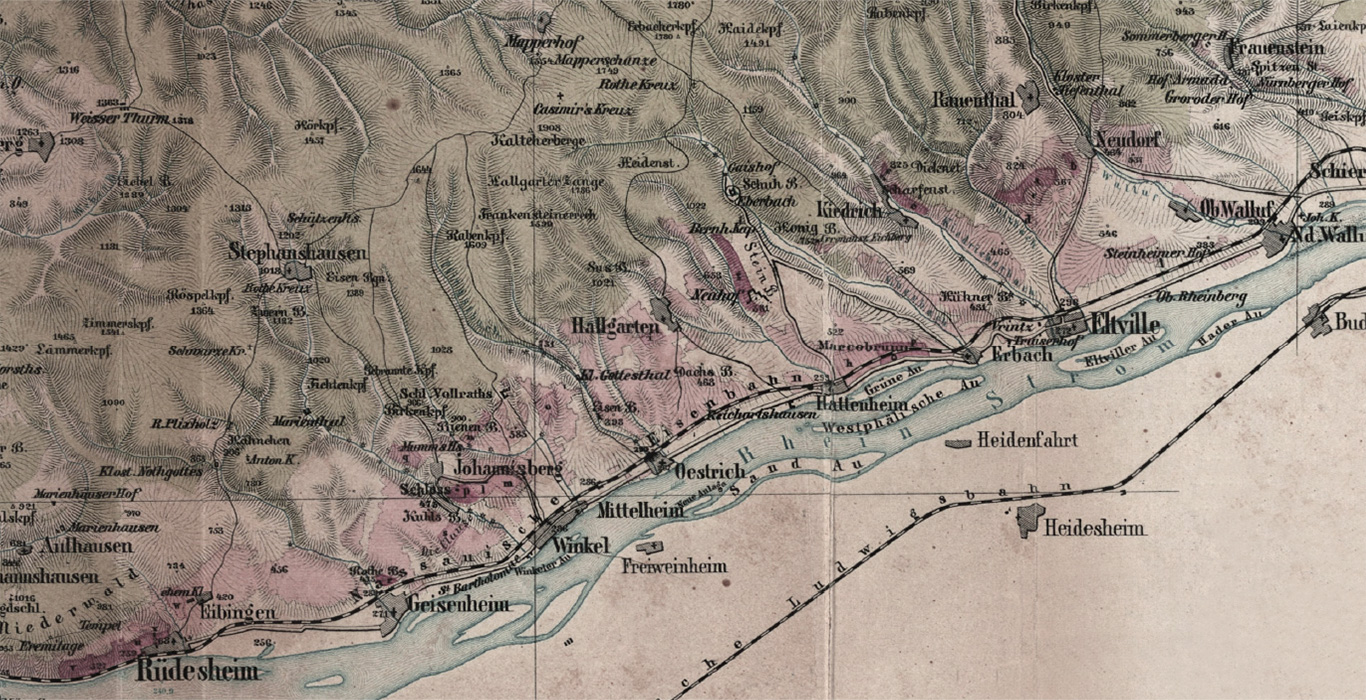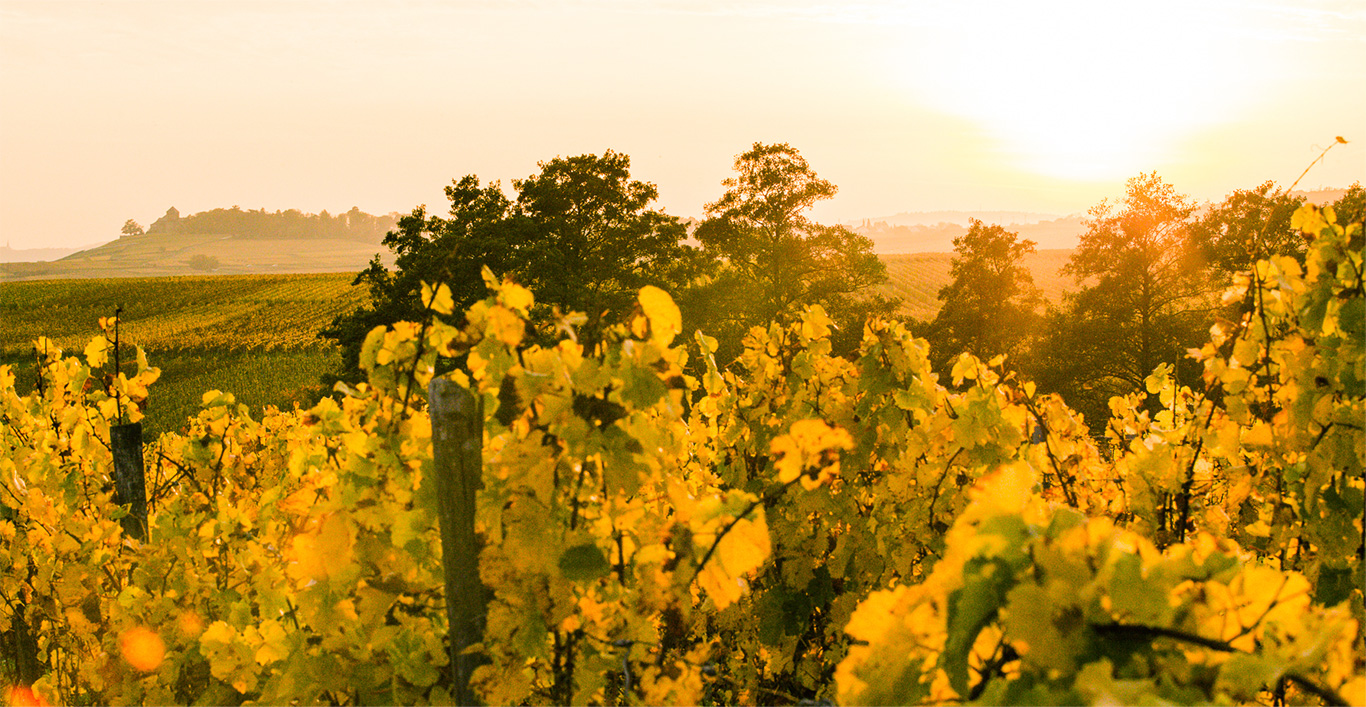ORIGIN
Rheingau
Comprised of some 3200 hectares of vineyards, the Rheingau is one of the smaller winegrowing regions in Germany. Yet the home of the Spreitzer family is a region rich in history and traditions and, as such, one of the most significant wine regions in the world!

The roots of winegrowing in the Rheingau run all the way back to the Romans. However, the first documented cultivation began in 1135 with Benedictine monks, followed later by the Cistercians in Eberbach Monastery. In the following centuries, the monks left their mark on viticulture, plowing the Taunus Mountain hills and planting grapes to make wine. This set the cornerstone for the continuous rise in popularity of today’s winegrowing region.
The Rheingau owes its renown to an amicable whim of nature. Only here, where the “knee of the Rhine” takes a bend, does the 1000km-long river change its course take a brief jaunt to the west. The heart of the Rheingau runs about 40 kilometers along the steep, southern-facing banks of the Rhine River between Wiesbaden and Lorch. Long, warm summers and short, mild winters together with low precipitation are indicators of a superb climate for Riesling grapes. The added warmth from the sun’s reflection off the Rhine and the diversified, geological composition of the soils are further enhancement to the growing conditions. Over 80% of the Rheingau is cultivated with Riesling, about 11% with Pinot Noir. Truly unique, worldwide.
